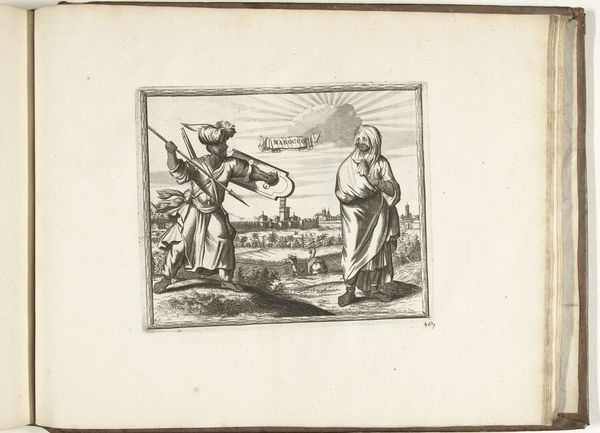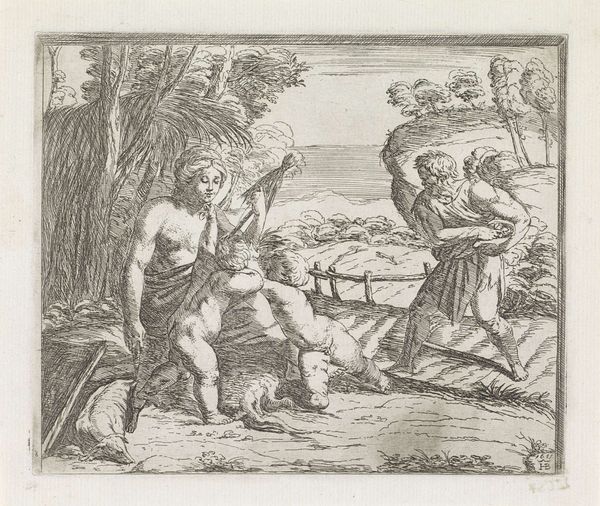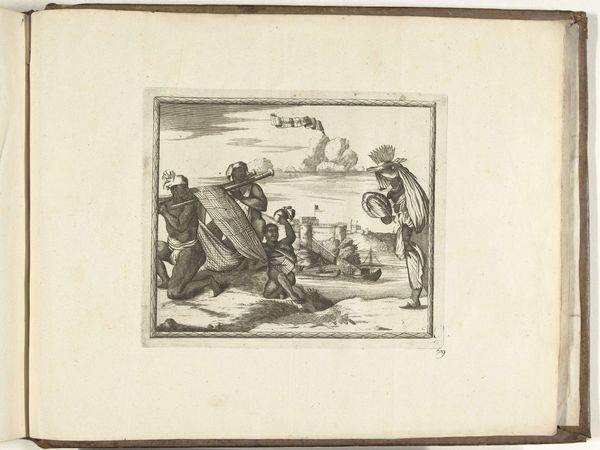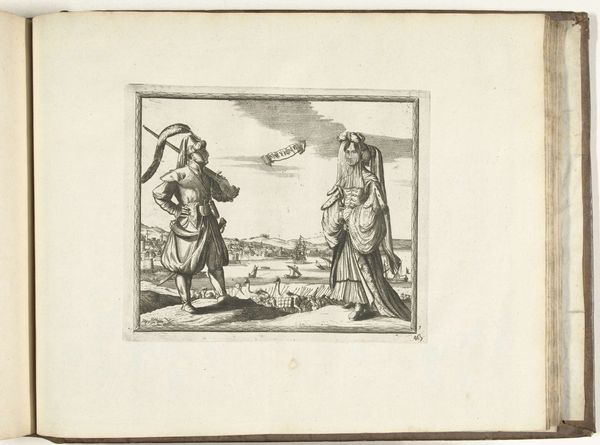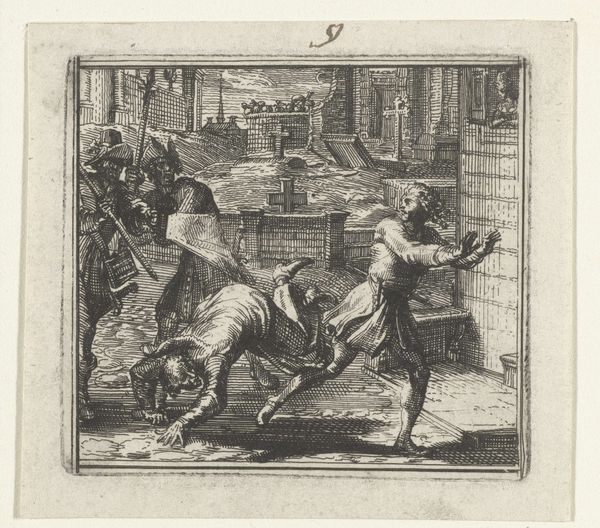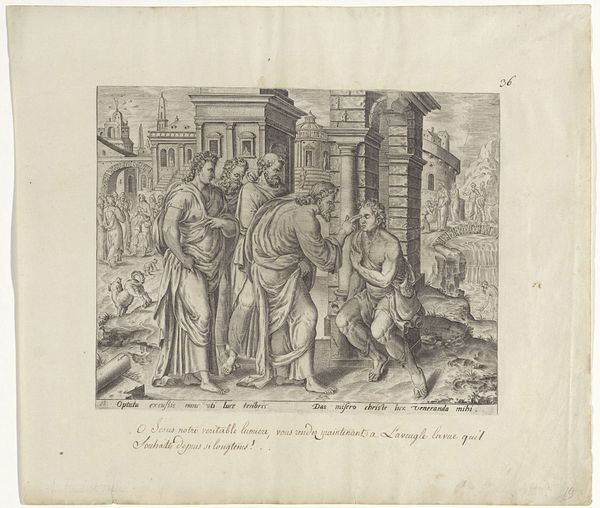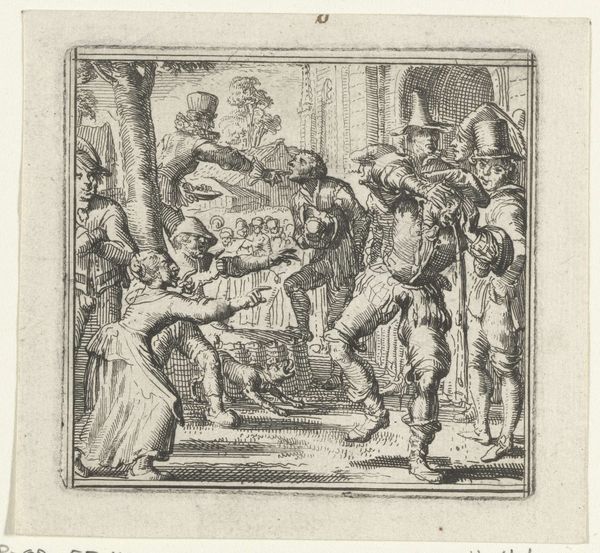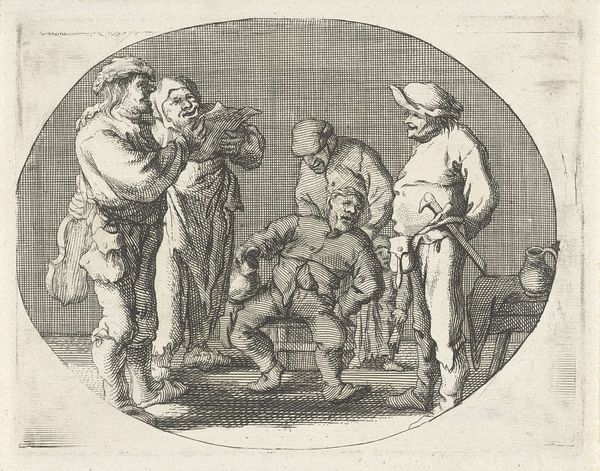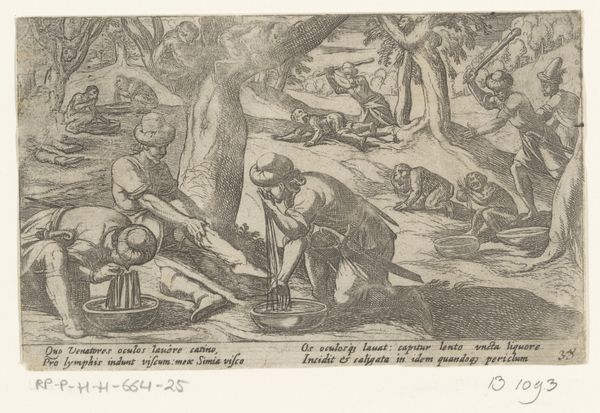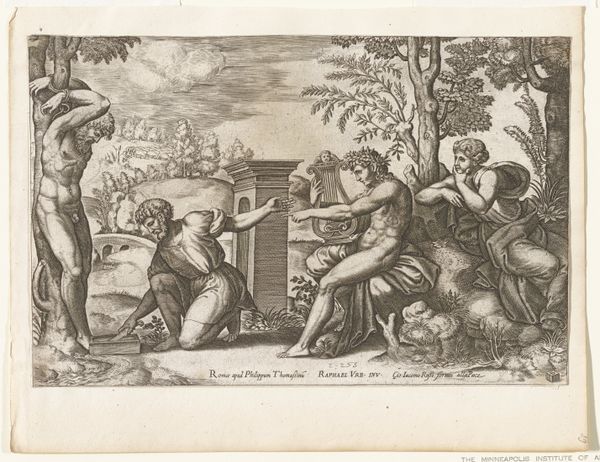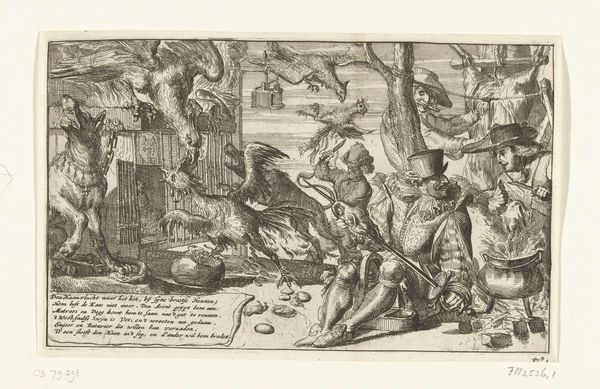
drawing, print, etching, engraving
#
drawing
#
baroque
# print
#
etching
#
old engraving style
#
figuration
#
genre-painting
#
engraving
Dimensions: height 801 mm, width 110 mm
Copyright: Rijks Museum: Open Domain
Editor: This etching by Johann Wilhelm Baur, titled "Drie Fransen, een plein in de achtergrond" from 1636, really caught my eye. It's quite small, but the figures are so animated. What social dynamics do you think Baur is capturing here? Curator: This piece provides us a fascinating glimpse into 17th-century perceptions of national identity and class. The scene feels almost like a staged performance, doesn’t it? Consider the title: "Three Frenchmen, a Square in the Background." What assumptions are embedded in even identifying these figures as "French"? And who is observing them? Editor: It’s interesting that you mention the observer because that was my first thought. To me, the three figures are subjects for mockery, especially with the other individuals in the square jeering at them from afar. I notice also the odd costume worn by all three characters... How can we interpret their clothing in a socio-historical framework? Curator: Exactly. What if the "Frenchmen" weren't just individuals, but represented broader anxieties or stereotypes held by Baur's audience? Are they the subject of ridicule because of their perceived effeminacy, their foreignness? Their clothing definitely plays into that— the exaggerated forms serve as a visual shorthand for cultural critique. The very act of observing and representing them, particularly through printmaking, becomes a commentary on power, "otherness," and national identity. Who do you imagine would have been Baur's audience? Editor: Perhaps wealthy patrons? Those who could afford prints like these, reinforcing their own sense of superiority or national pride by viewing these figures as comedic others. Thinking about it, I do see now that it is both a depiction but also a judgment. Curator: Precisely. By viewing this work, they are not simply entertained; they’re actively participating in a narrative about difference, class, and belonging in the early modern period. Editor: This definitely shifts my perspective. I hadn't considered the layered dynamics of the depicted event in the context of its contemporary viewer. Curator: It shows how genre scenes can be valuable sources when re-examined using identity as lenses for a richer reading of history.
Comments
No comments
Be the first to comment and join the conversation on the ultimate creative platform.
